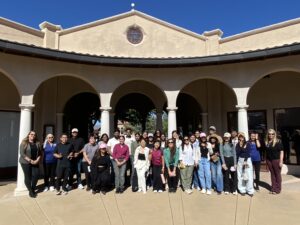
The Town of Clarkdale is a historic mining community in the Verde Valley, a region in central Arizona. As the region and state are facing challenges around water quantity and quality, municipalities, nongovernmental organizations, and other critical stakeholders are collaborating to develop short- and long-term solutions. To advance these efforts, the Town of Clarkdale is […]
Read More… from Selna Mongini STEAM Park: Visual Communication Opportunities, Strategies, & Design Elements

The Town of Clarkdale, a historic mining community in the Verde Valley in central Arizona, is dedicated to providing and ensuring a sustainable water supply for its residents now and into the future. As water is an increasingly complex topic in the region and state, the Town is interested in improving communication efforts around the […]
Read More… from Visualizing Water Sustainability in the Clarkdale Community

The Town of Camp Verde, located in the Verde Valley, a region in central Arizona, is interested in exploring new opportunities and pathways to promote water conservation in the local community as well as regional watershed. While the region faces ongoing challenges around water quantity and quality – which are being addressed through collaboration with […]
Read More… from Exploring Challenges and Opportunities for Water Conservation and Stormwater Management in the Verde Valley Watershed

The Town of Miami is a historic mining community in the Copper Corridor region of Arizona. Situated in a mountainous region, the community experiences more extreme weather conditions than other areas of the state, including fires, floods, landslides, and other related natural hazards as well as technological hazards such as cybersecurity concerns. As a smaller, […]
Read More… from Emergency Management Response, Recovery, & Resilience Strategies

The City of Chandler, located in the southeastern Phoenix Metropolitan Area, is a thriving community of innovation seeking to plan a sustainable future for its residents, businesses, and visitors. With an interest in emerging technologies, such as Artificial Intelligence (AI), the City is exploring opportunities to leverage AI to improve municipal operations and governance. To […]
Read More… from AI in Government: Ethics

The City of Chandler, located in the southeastern Phoenix Metropolitan Area, is a thriving community of innovation seeking to plan a sustainable future for its residents, businesses, and visitors. With an interest in emerging technologies, such as Artificial Intelligence (AI), the City is exploring opportunities to leverage AI to improve municipal operations and governance. To […]
Read More… from AI in Government: Risks and Opportunities

The City of Chandler, located in the southeastern Phoenix Metropolitan Area, is a thriving community of innovation seeking to plan a sustainable future for its residents, businesses, and visitors. As the City is dedicated to utilizing data to improve municipal operations and planning, the Neighborhood Resources Department is exploring opportunities to further leverage the Building […]
Read More… from Data Analytics in Local Government
Waste contamination is an increasingly challenging barrier to effective recycling and composting efforts. Green waste contaminants, such as grass clippings and leaves, can release significant amounts of methane and other greenhouse gasses when disposed of in landfills. Greenwaste is any organic material that can be broken down into compost. Compost is converted into soil, mulch, […]
Read More… from Green Waste Scaling
With the constant evolution of technology, it is vital for organizations to incorporate a strategic approach to social media into their marketing plans to effectively connect with target audiences in new ways. Social media provides an excellent outlet for municipalities to build relationships with their community and grow their economic sector. However, it is imperative […]
Read More… from Social Media Strategy and Policy
The city’s mission is to improve the lives of the people they serve, and its vision is to be the community of choice for residents, businesses, and employees. Additionally, the city’s Strategic Plan and Balanced Scorecard are designed to drive performance throughout the organization towards one common objective – improving the community experience. The results […]
Read More… from Multi-Generational Community Engagement (2/2)





